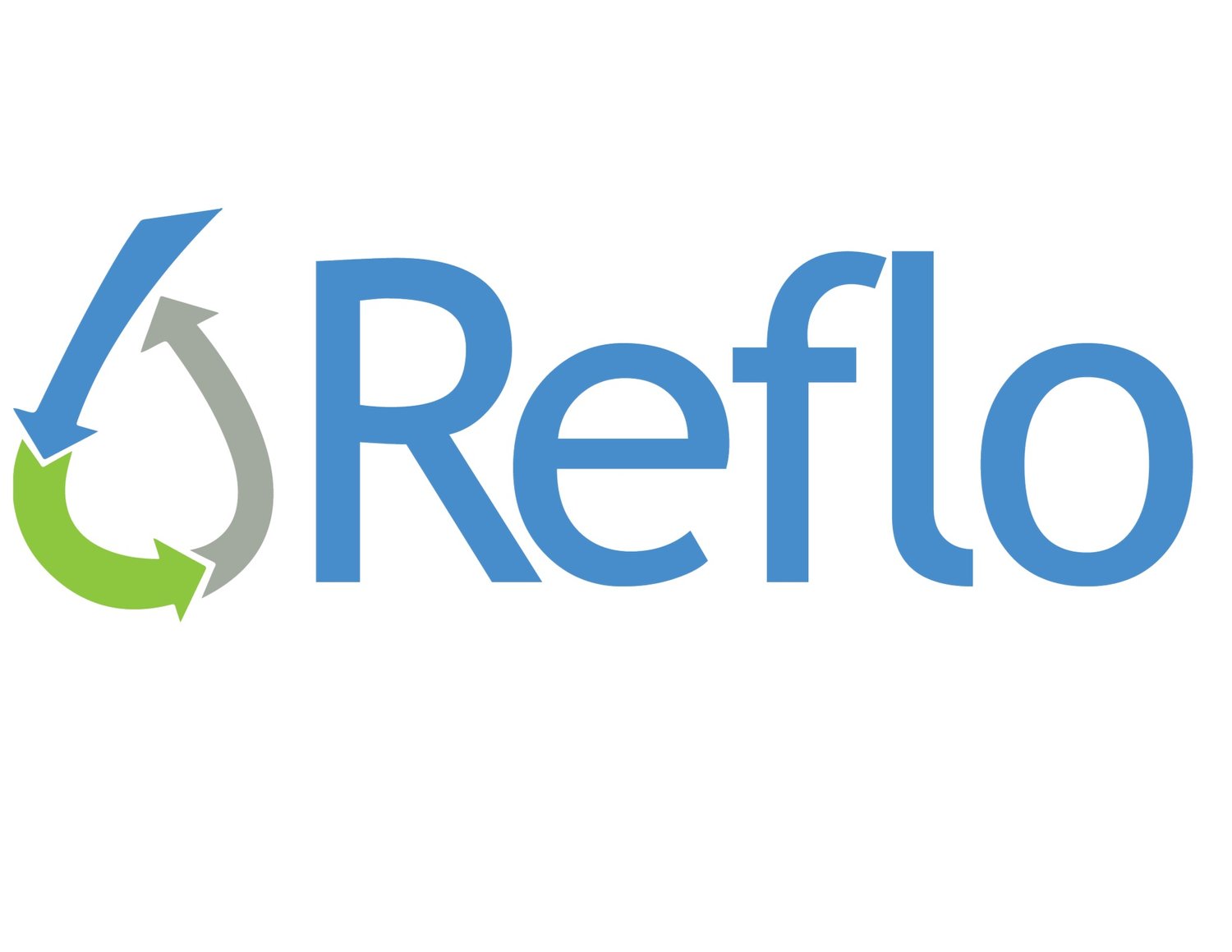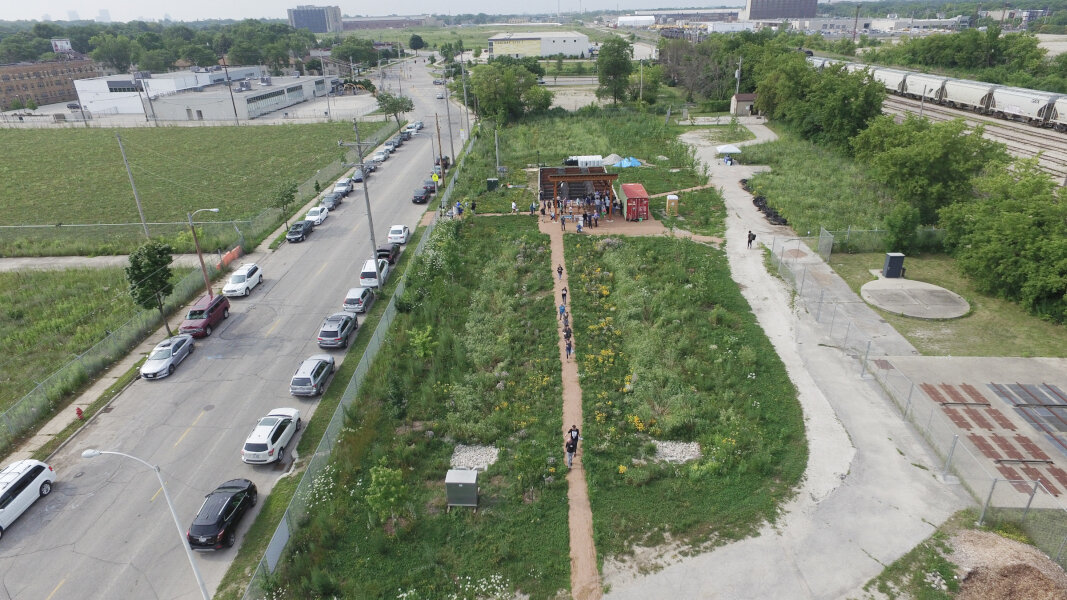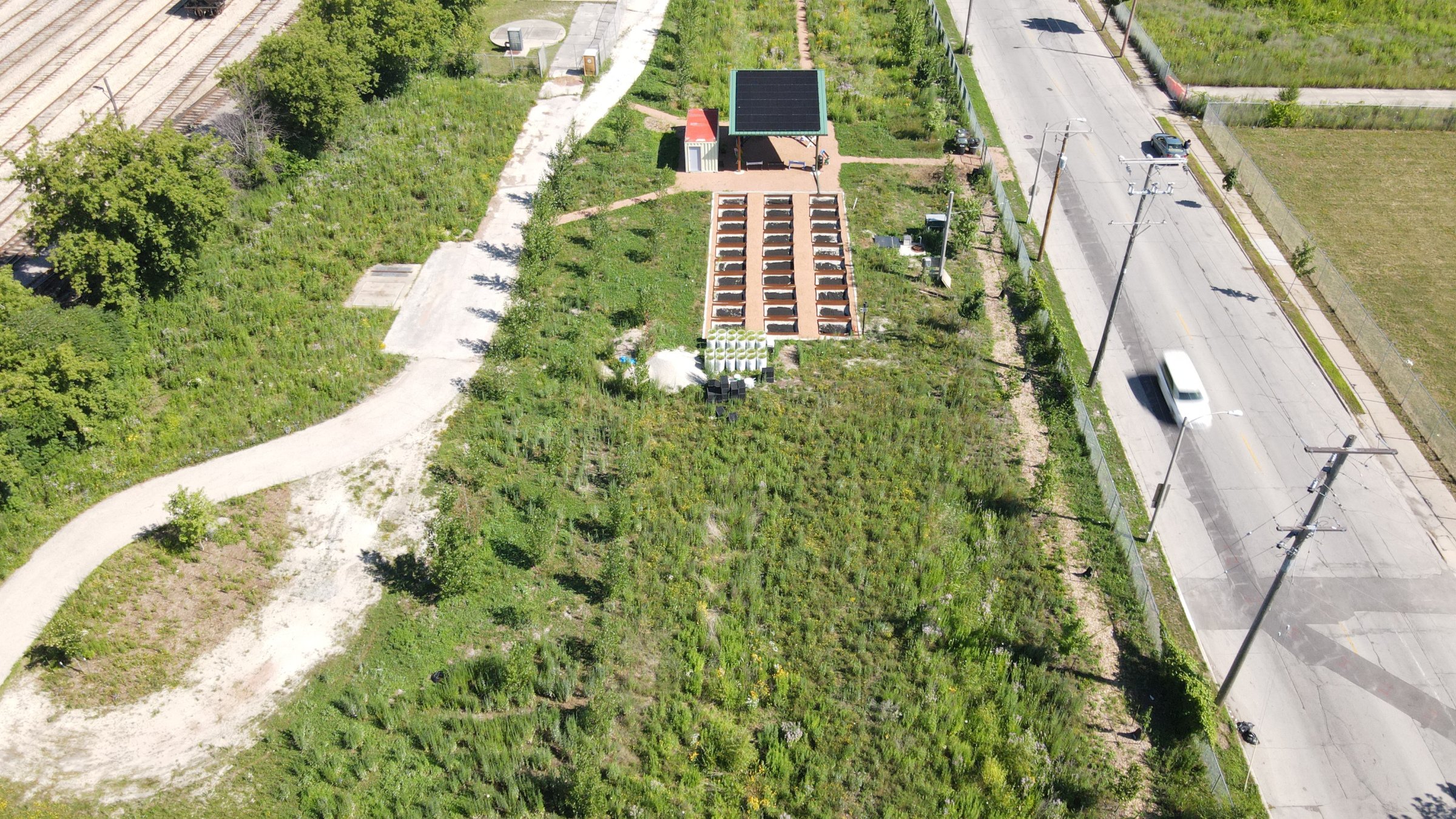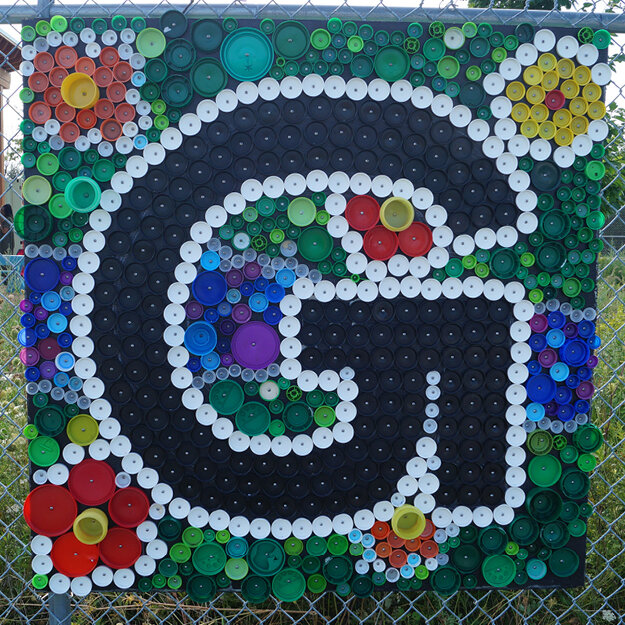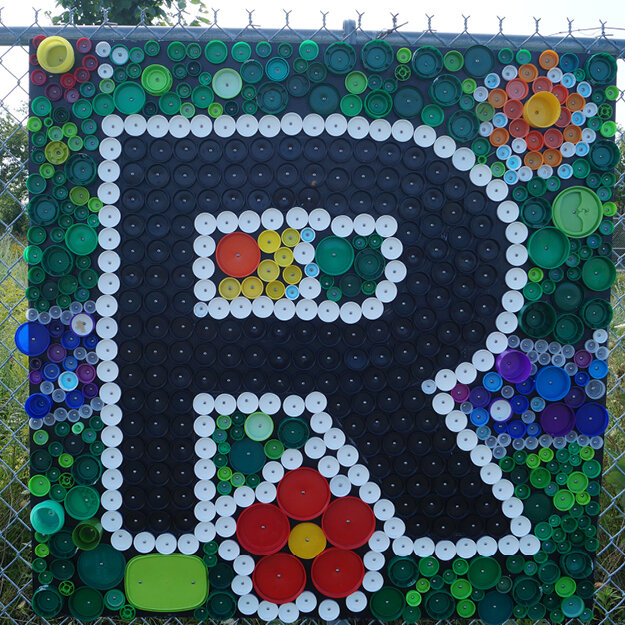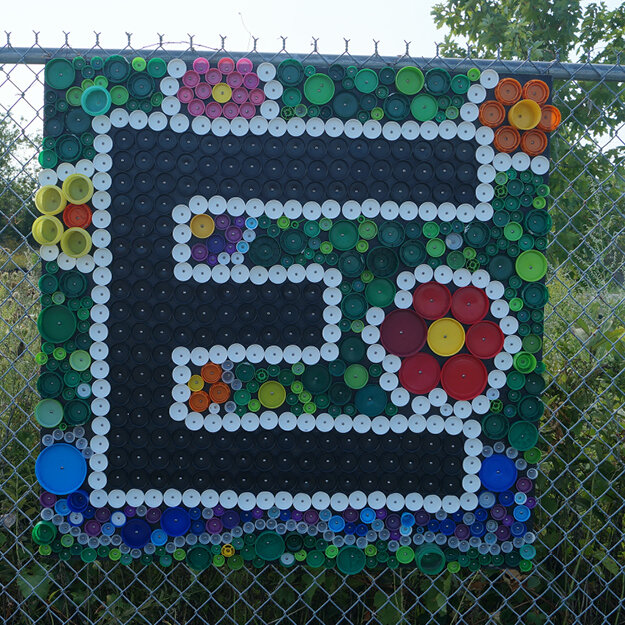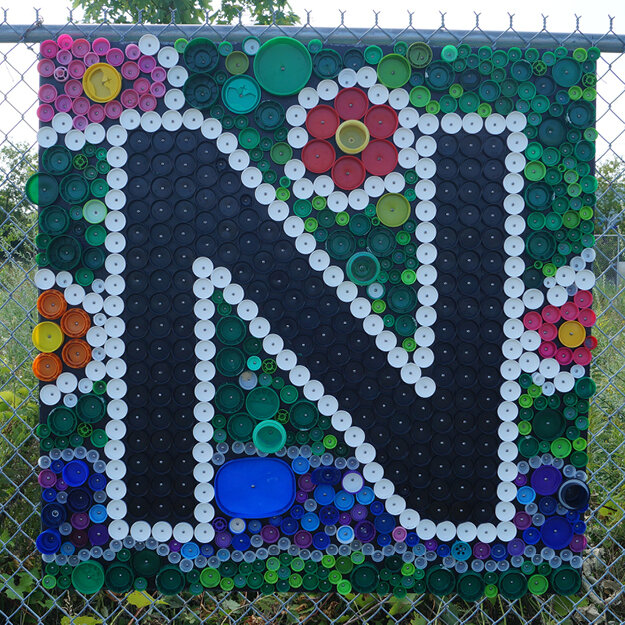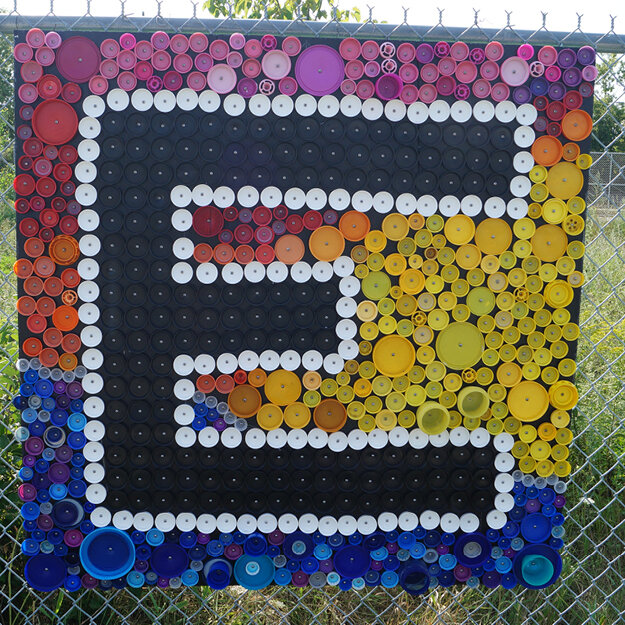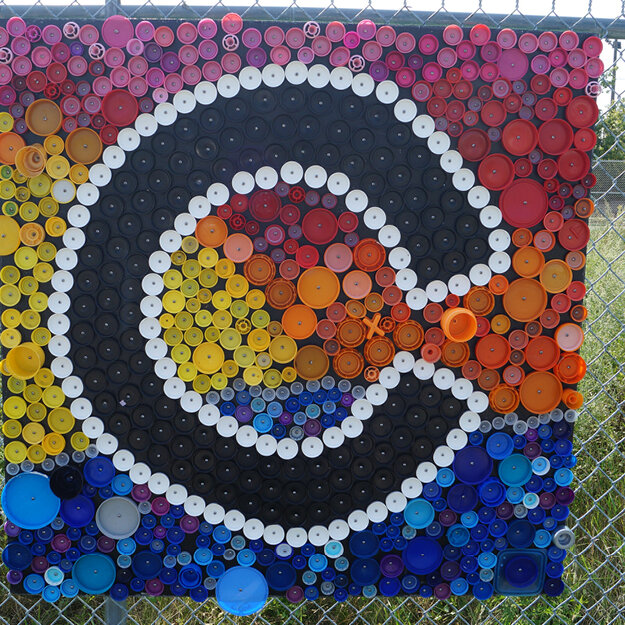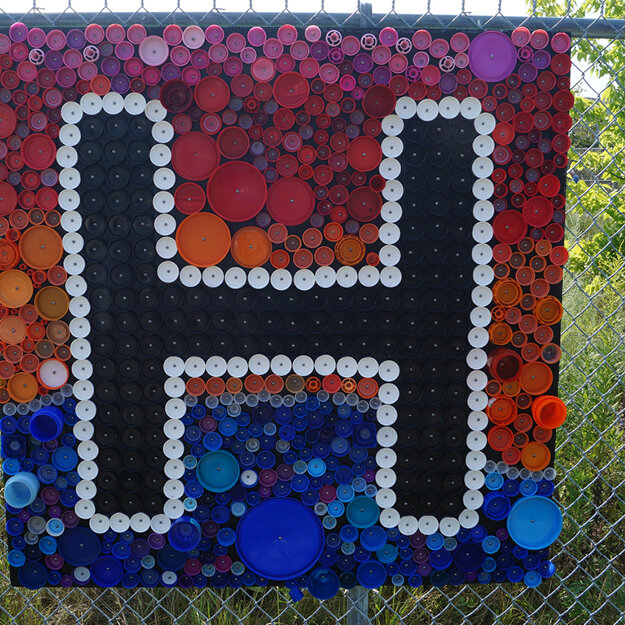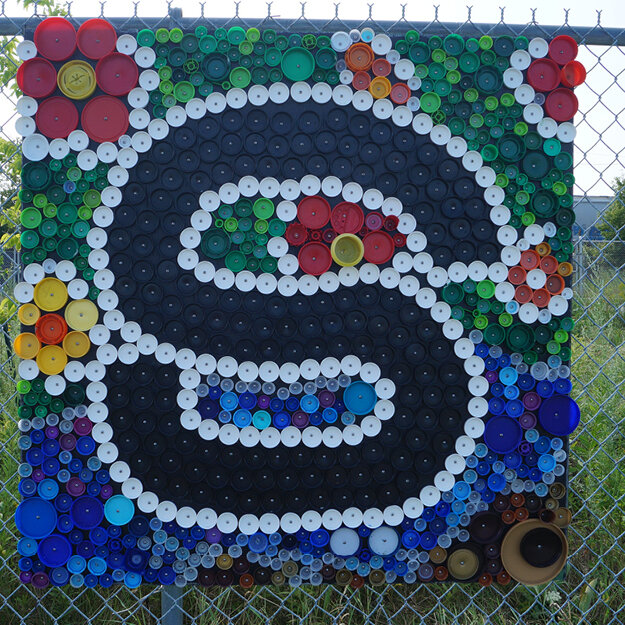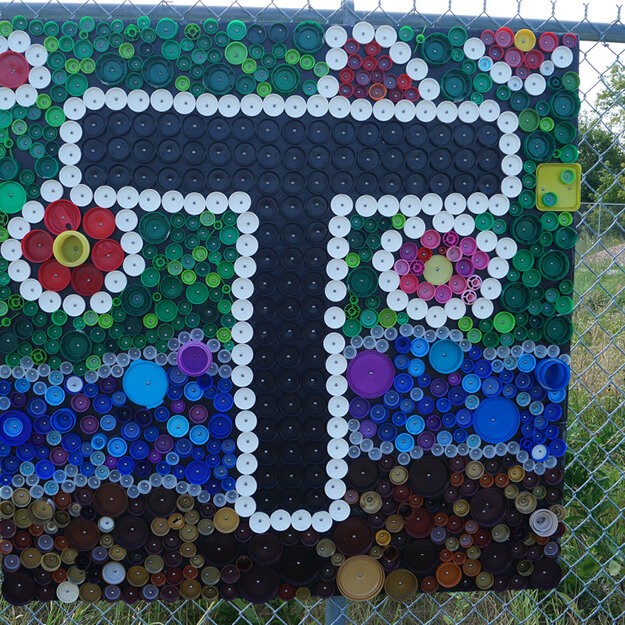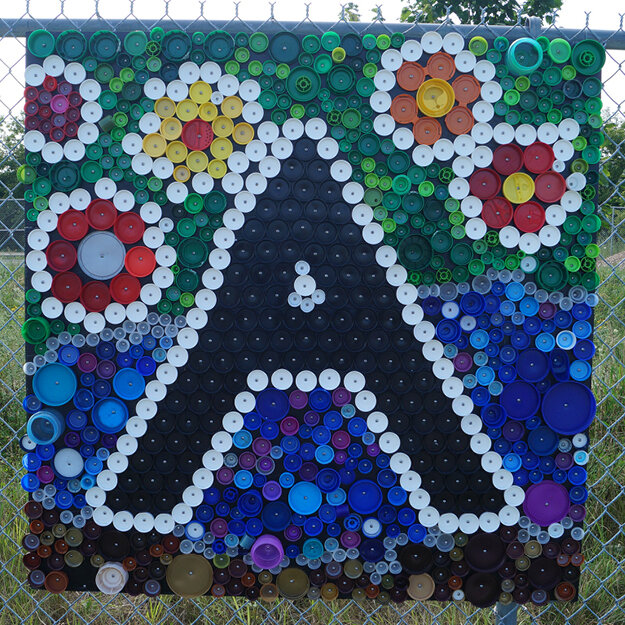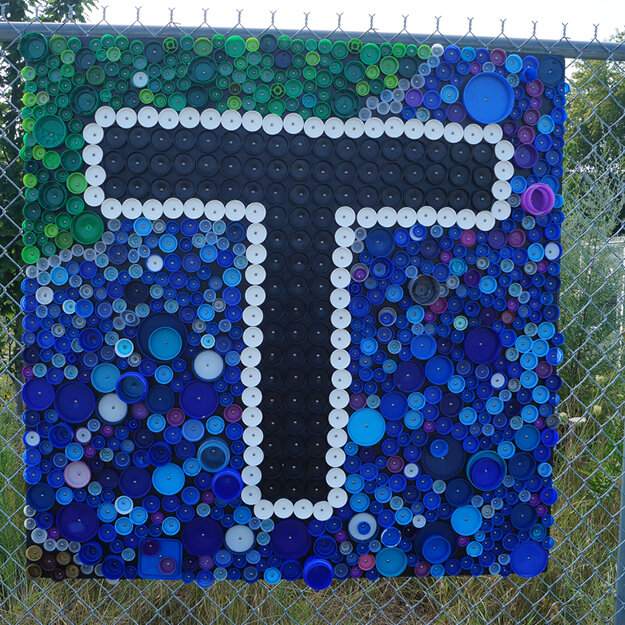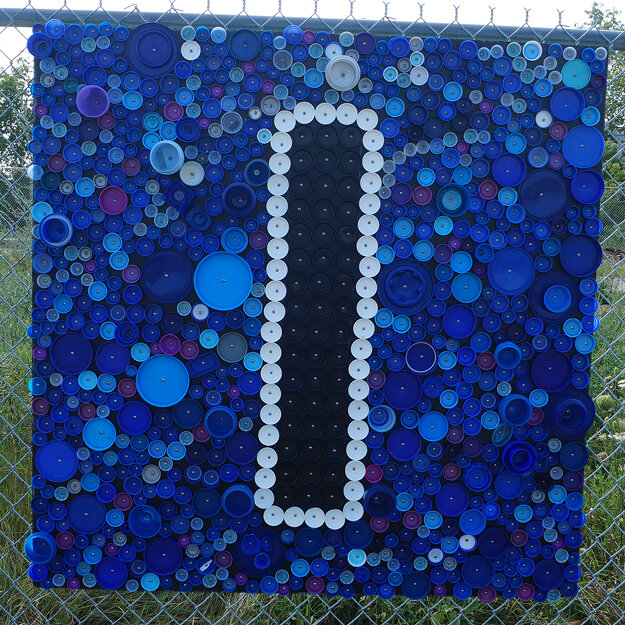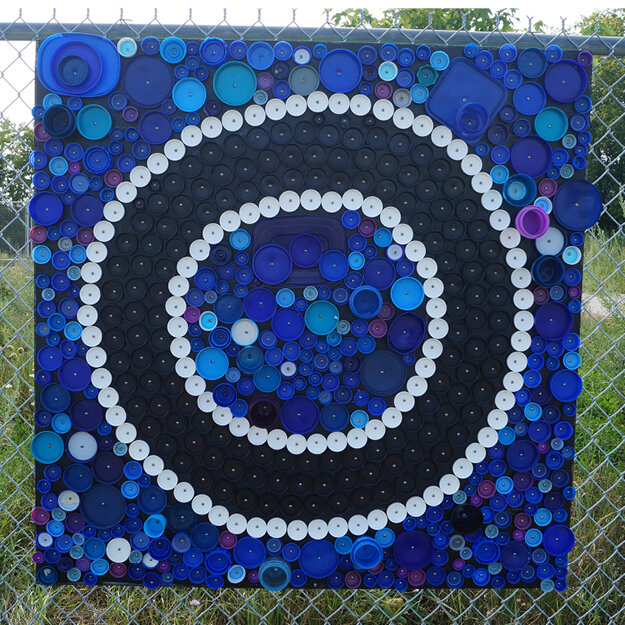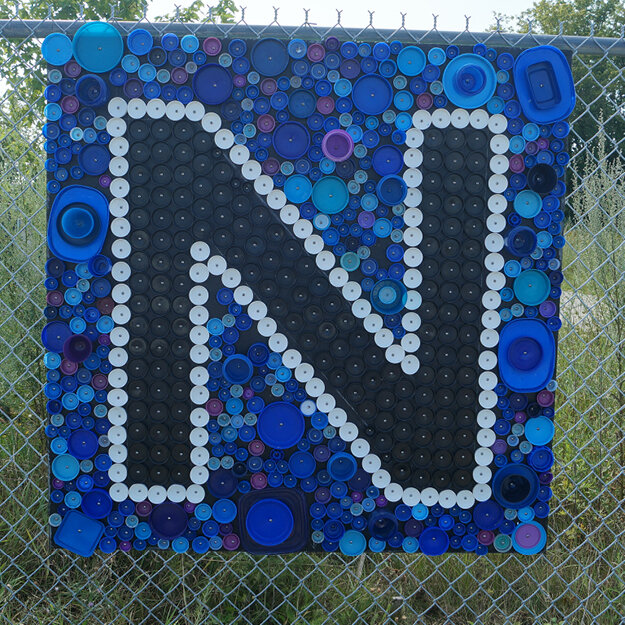A Jewel in the Rough
Click to access an annotated PDF highlighting Green Tech Station features.
Green Tech Station is just northwest of 31st and Capitol Drive. The site is owned by the City of Milwaukee and leased to Northwest Side Community Development Corporation, which offers programming including tours, field trips, and R&D opportunities. Reflo supported design, implementation, ongoing maintenance, education, and programming. Reflo’s environmental interns helped build the site over multiple seasons under the guidance of Justin Hegarty and Wilniesha Smith.
Drone photo by Reflo’s Kareem Benson-White, July 22, 2021
With partners including the City of Milwaukee Redevelopment Authority, Northwest Side Community Development Corporation, and Milwaukee Metropolitan Sewerage District, Reflo helped transform a blighted parcel in Milwaukee’s 30th Street Corridor into Green Tech Station—where students, researchers, and professionals learn about and experiment with forms of green infrastructure.
From Brownfield to Green Tech
The land was once used as a railway supply staging area for nearby industry, hence the name “Station.”
As industry left the area, it was abandoned.
The awkwardly shaped parcel was contaminated from this historic industrial use, requiring cleanup of the soil. Contaminated soil was mounded to the north end of the site where it was capped with clean fill and planted with native prairie and rows of poplar trees common to urban streetscapes.
The south and west end of the property contains equipment and infrastructure operated by the Milwaukee Metropolitan Sewerage District.
Deep beneath the surface, two large sewer pipes that collect water from the surrounding area combine and, when conditions merit, drain down over another 200 feet into the Deep Tunnel.
The circular concrete pad rests above a drop shaft descending into the Deep Tunnel and allows periodic access by specialized maintenance and inspection vehicles.
Views of Green Tech Station to the south in 2018 (left) and 2021 (right). Note the twin bioswales on both sides of the gravel path. These manage stormwater conveyed off of 31st Street.
Views of Green Tech Station to the north in 2018 (left) and 2022 (right). Note the green infrastructure test bed plots (the metal rectangles) set atop an underground cistern (not visible beneath the crushed red granite). The 20,000-gallon cistern holds water that passes through the bioswales. This water can be either pumped up via rooftop solar power to irrigate plantings on the site or slowly released into the sewer system. It is a demonstration of technology that can be adapted to various sites.
Infused with Student Art
Green Tech Station is designed not only with science in mind but with art at its heart.
ArtWorks for Milwaukee student interns supported two facets of art engagement at the site. Processing thousands of recycled plastic bottlecaps, including those donated by Penzeys Spices, under the direction of lead artist Jenni Reinke they created a multi-panel mosaic mural: each fence-mounted panel constitutes a letter spelling out G-R-E-E-N T-E-C-H S-T-A-T-I-O-N.
The student interns also painted water-themed designs onto a cluster of Aldo Leopold benches assembled by Reflo student interns. Each student artist thought through and implemented their own design. They are all brightly painted but range in artistic styles and interpretations.
When you visit Green Tech Station, see if you can find the Great Lakes, vibrant coral reefs, a trashy beach, the aquatic food chain, water in global languages, and more.
